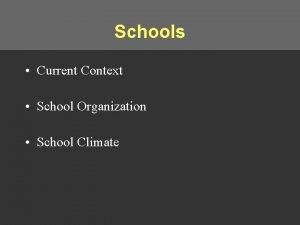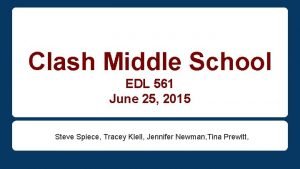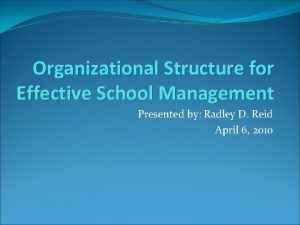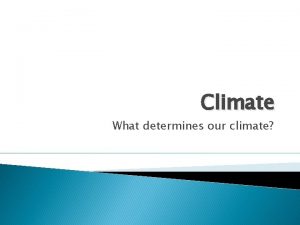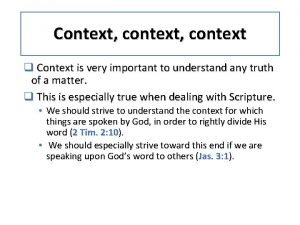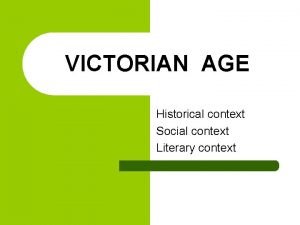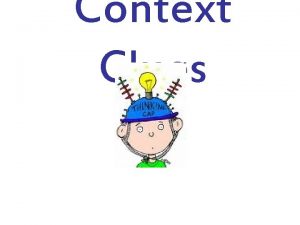Schools Current Context School Organization School Climate Schools































- Slides: 31

Schools • Current Context • School Organization • School Climate

Schools • Current Context • School Organization • School Climate

Function of schools Schools as a medium for… • Education • • Basic academics General “liberal” education (Elite) intellectual training Vocational training • Preparation for adulthood • Family life • Citizenship • Employment and finance • Social change • Social control

The Rise of Schooling Compulsory education for adolescents is a recent advent in America In other Western countries, a similar trend took place.

Origins of Compulsory Education in America • Industrialization – Many families could make ends meet without the labor of their adolescents – Greater need for skilled and reliable (adult) workers • Urbanization and Immigration – Rapid population growth led to overcrowding, slums, crime – Compulsory secondary education was a means of social control, to improve lives of poor and working classes

Characteristics of good schools • Emphasis on intellectual activities – Challenging curriculum • • High quality teachers Self-monitoring (meta-cognitive) Community integration Active learning

Good schools, good parents • Two crucial dimensions ü Responsiveness ü Demandingness • What do these look like in parenting? • What do these look like in school?

Optimum School Climate • Supportive teachers, involved with students, dedicated • Firm but fair discipline • High expectations for student performance and conduct -Higher attendance -Higher achievement scores -Lower rates of delinquency

Positive Impacts on Engagement • Positive school climate • Parents’ high expectations for achievement • Parents’ involvement in their adolescent child’s education • Parenting style: High demandingness and high responsiveness

Schools • Current Context • School Organization • School Climate

School organization Size – Size of school or size of class • Which is more important? – Less bureaucracy, more intimacy – Stronger sense of connection – Greater involvement in activities School transitions – elementary secondary education – Major differences between them?

School Size • Schools grew larger to offer a wider range of courses and services to students at decreased cost to taxpayers • Student performance and interest in school improve when schools are more intimate – Schools within schools

Effective Schools: Size Matters • Large schools – Offer diverse courses and extracurricular activities • Small schools – Less diversity in offerings; students more likely to participate in extracurricular activities • Scholars agree: optimum school size for adolescents is? . . Between 500 – 1000 students What size of school did you go to?

School Size • Smaller school size encourages participation – Ideal size: Between 500 and 1, 000 students – In larger schools, students tend to be observers rather than participants – Especially important for students whose grades are not very good to begin with

Class Size • Classroom size – Research findings misinterpreted by politicians who began emphasizing importance of small classes – Does not affect scholastic achievement during adolescence, except in remedial courses – Adolescents learn as much in classes of 40 students as in classes of 20 students Insert photo from DAL

Junior High, Middle School or Neither? Plan Explanation 6 -3 -3 6 years elementary; 3 years junior high; 3 years high school 5 -3 -4 5 years elementary; 3 years middle school; 4 years high school 8 -4 8 years elementary; 4 years high school Which system did you attend? What were the benefits? Drawbacks? Which do you think is best, particularly with respect to transitions and adolescence.

Age Grouping and School Transitions • As children move into middle school or junior high – School grades and academic motivation drop – Scores on standardized achievements tests do not decline – Student motivation and changes in grading practices may be changing, not student knowledge • Schools can combat these changes by reducing anonymity, hiring teachers with training in adolescent development, and strengthening ties between the school and community

Transition from Elementary School In comparison to Elementary Schools, Jr. High Schools: 1. Place greater emphasis on teacher control and discipline. 2. Provide fewer opportunities for student decisionmaking, choice, and self-management. 3. Have teachers who spend more time controlling and less time teaching. 4. Have less personal and positive teacher-student relationships. Students perceive teachers less friendly, less supportive, and less caring.

Age Grouping and School Transitions • Classroom environment in middle school/junior high is different than elementary school – Teachers hold different beliefs about students – Teachers also hold different beliefs about their own teaching abilities – Developmental mismatch between what adolescents need and what they get from teachers • Junior high school students in more personal, less departmentalized schools do better in school than their peers in larger and more anonymous schools • No uniform effects on all students during transitions (individual differences)

Schools and SES Low SES students – Rates of academic progress during the school year are equal to high SES students – Scores decline in the summer • Summer school may reduce widening of achievement gap between affluent and poor students

Schools and Adolescent Development • Most schools are not structured to promote psychosocial development • For most adolescents, school is the main setting for socializing

Social Organization of Schools: Tracking • Proponents argue that ability-grouping allows teachers to design class lessons that are more finely tuned to students’ abilities • Critics argue tracking leads to problems – Students who are placed in the remedial track generally receive a poorer quality education, not just a different education – Socialize only with peers from same track – Difficult to change tracks once in place, especially for minority students

Ethnic Differences in High School Dropout Rates

Ethnic Differences: Achievement • What explains these differences? • Some differences are intertwined with issues of social class, parenting practices, friends’ influences • Systemic prejudice and discrimination

Schools • Current Context • School Organization • School Climate

Violence in schools • 50 years ago – Gum, back talk, making noise • Today’s schools – Rape, robbery, shootings, assault – 1 of 4 students victims of violence – 1/3 boys carry weapon • Problem specific to schools? – 20 students in 50 million killed at school – Hundreds more children killed at home

Violence in schools • The past decade has seen numerous highly publicized murders in schools • Yet, in recent years, there is an overall decline in violence in U. S. schools • Widespread perception that U. S. have become more dangerous in the past decade -Security practices in schools – e. g. , metal detectors -Federal funding for violence prevention programs -Research on bullying

School Violence • One in four American high school students has been the victim of violence in or around school – Violence more common in overcrowded schools in poor urban neighborhoods – Asian Americans targeted because of perceived teacher preference toward these students – Zero-tolerance policies • Lethal school violence – Widely publicized but rare, school shootings declined since 1990 s – Increase in number of school-shooting related deaths because of automatic weapons – Impossible to predict which students will commit these acts

The Climate of the Classroom • How teachers interact with students, use class time, and the expectations they hold for students all influence learning and academic achievement • Students achieve more when attending schools that are responsive and demanding, where teachers are supportive but in control • Similar to the authoritative family environment

College Attendance Through the Years

Beyond High School: The Non-College-Bound • Secondary schools are geared almost exclusively toward college-bound youngsters, even though one third of adolescents do not go on to college • Rise in minimum-wage service jobs means less chance of making decent living without college experience • Critics argue we should ease transition to adult world of work for those not interested in college by providing apprenticeship and advanced skilled job training
 School context and organization
School context and organization Climate change 2014 mitigation of climate change
Climate change 2014 mitigation of climate change Line current and phase current
Line current and phase current Power formula three phase
Power formula three phase N=nc exp(-eg/2kt)
N=nc exp(-eg/2kt) Line current and phase current
Line current and phase current Drift current density unit
Drift current density unit Ceramic composition resistors
Ceramic composition resistors A jfet always operates with
A jfet always operates with Balanced delta-wye connection
Balanced delta-wye connection Slideplayer
Slideplayer Diffusion current formula
Diffusion current formula Chapter 3 shielded metal arc welding
Chapter 3 shielded metal arc welding Touch current vs leakage current
Touch current vs leakage current Kcl mesh analysis
Kcl mesh analysis High context vs low context culture ppt
High context vs low context culture ppt High context vs low context culture ppt
High context vs low context culture ppt Pragmatics examples
Pragmatics examples Contoh komunikasi high context dan low context
Contoh komunikasi high context dan low context Huntsville city schools returning student registration
Huntsville city schools returning student registration Safety target and reach schools
Safety target and reach schools Process organization in computer organization
Process organization in computer organization Block organization
Block organization Edl positive school culture & climate
Edl positive school culture & climate Hierarchy of school management
Hierarchy of school management Texas school nurses organization
Texas school nurses organization Unit 2 the united states and canada
Unit 2 the united states and canada Deciduous forest precipitation
Deciduous forest precipitation Persuasive essay about global warming
Persuasive essay about global warming What factors affect the weather
What factors affect the weather Humid subtropical climate
Humid subtropical climate Latitude climate zones
Latitude climate zones
